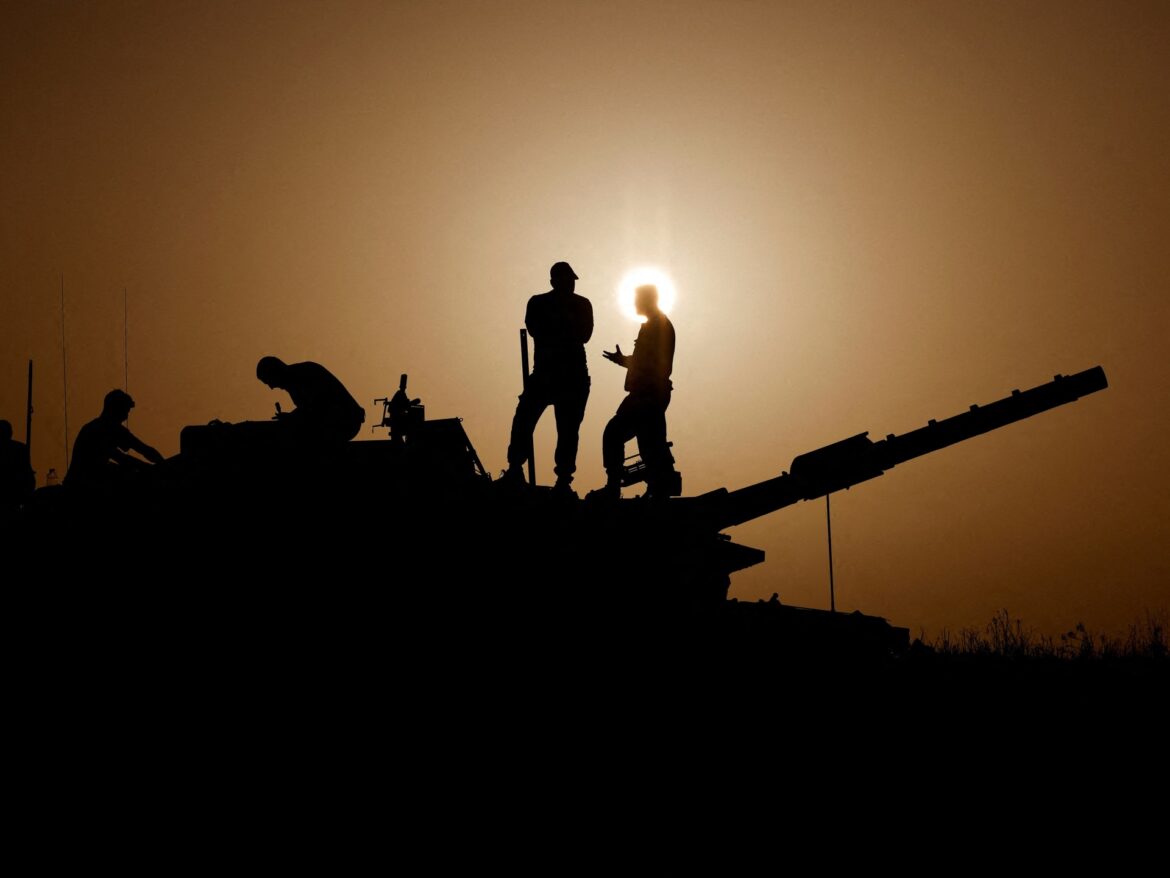The pause was agreed to Tuesday evening, announced Wednesday and is expected to bring a temporary end to the war Thursday morning.
But the fighting did not stop and even seemed to intensify.
Aerial bombardments continued, helping Israeli forces attempt to get as close as possible to the center of Gaza City before the truce.
Hamas fighters set up ambushes to neutralize as many tanks and armored personnel carriers as possible before the ceasefire ended all military activity for 96 hours.
The last two days must have been the most trying for the fighters on both sides since the start of the ground campaign.
Military historians have written volumes about the simultaneous anxiety, stress, expectations, hope, mental pressure, and existential fear of soldiers in the hours leading up to a ceasefire or truce.
In all wars, wherever and however they are fought, no soldier wants to be the last casualty before the guns fall silent. When informed of the imminent break, their natural reaction is to relax, to relax their efforts, because soon they will stop all activity.
Rather than allow this, their officers – following orders and pressure from their respective civilian authorities – push them to continue for another day, two or three. The soldiers, themselves unit commanders, hate having to do this, knowing the effect such orders have on troop morale, but they cannot disobey their superiors.
This tense anticipation of Zero Hour when they will, at least temporarily, lay down their arms, is certainly the most stressful period of their military career.
Civilian authorities must surely know this, so why did they let Zero Hour move to 7 a.m. Friday, prolonging the agony of their own soldiers?
Some of this is simply civil service. One alleged reason for delaying the pause was that the agreement had not been formally signed by Qatar and Hamas, “only officially announced.” Additional administrative formalities were necessary to “clarify the names on the lists of people to be released.” All these seemingly unnecessary obstacles delayed the start of the break.
In fairness, the bureaucracy is not the only one responsible for the slow implementation of the agreement, it is just the most visible, but the military commands have not rushed either.
For the truce to work, it must first be made workable. Politicians agree in general terms: “Let’s stop the fighting and trade people.” The wording defines the intent and scope, but exactly how to implement what has been agreed is still up to those on the ground: the military.
It’s no easy task: the officers of two enemies who were trying to kill each other now have to talk – while the fighting rages on.
I have seen many ceasefires and prisoner exchanges, but I cannot recall one where a political agreement signed by the big bosses could be implemented without adversaries on the battlefield fix the fine print, because the devil is always in the details.
To begin, certain officers are chosen to study the agreement and, knowing the situation on the battlefield, determine how they will carry it out. They must decide viable and safe routes for buses carrying hostages and prisoners from one side to the other, agree whether the buses will have civilian or military drivers and possibly guards, and decide whether the guards will be armed or No.
Will they be accompanied by medical personnel? When will they be released or transferred from one set of buses to another?
Will the soldiers participating in the exchange cross into enemy territory and, if so, when and how will they return? Who is responsible for clearing roads of rubble and mines and to what extent? And many other delicate and difficult questions.
Making first contact is easier than most people think: adversaries listen to each other’s radio communications and often use the same walkie-talkie channels. In moments of relative calm, they taunt each other: boast, threaten, insult, belittle, insult… But after the break was announced, someone must have called the other side and said: “My commander wants tell your commander about the truce. »
First, they must confirm their authority, then begin to arrange an initial consultation, usually with both parties promising to maintain the security of the proposed meeting place and agreeing on the number of negotiators and assistants who will meet. would meet face to face.
The moment when opposing envoys first meet is the most tense time, as any seemingly insignificant detail can derail the entire agreement. Who will greet first? What happens if one representative refuses to shake the other’s hand? Does an Israeli officer give a military salute, while on the Israeli side, his counterpart is a “terrorist”? What happens if they can’t agree on certain issues?
Faced with so many potential pitfalls, both parties often prefer to use an intermediary they trust and who can help clarify things, defuse tensions and propose mutually acceptable solutions, an intermediary approach in which neither party to the negotiations will not lose face.
It helps if the intermediary is familiar with the situation and has dealt with both parties before. In Gaza, it will be the International Committee of the Red Cross/Red Crescent (ICRC).
As Qatar announced on Thursday, the first captives should be released on Friday at 4 p.m., just nine hours after the fighting was supposed to end. This suggests that most of the details I’ve listed here have already been ironed out, giving reason for cautious optimism.
The only slight doubt in my mind concerns the utility and wisdom of beginning a civilian exchange at a time when darkness is beginning to set in. Conducting business after sunset is never a very good idea in a combat zone.



